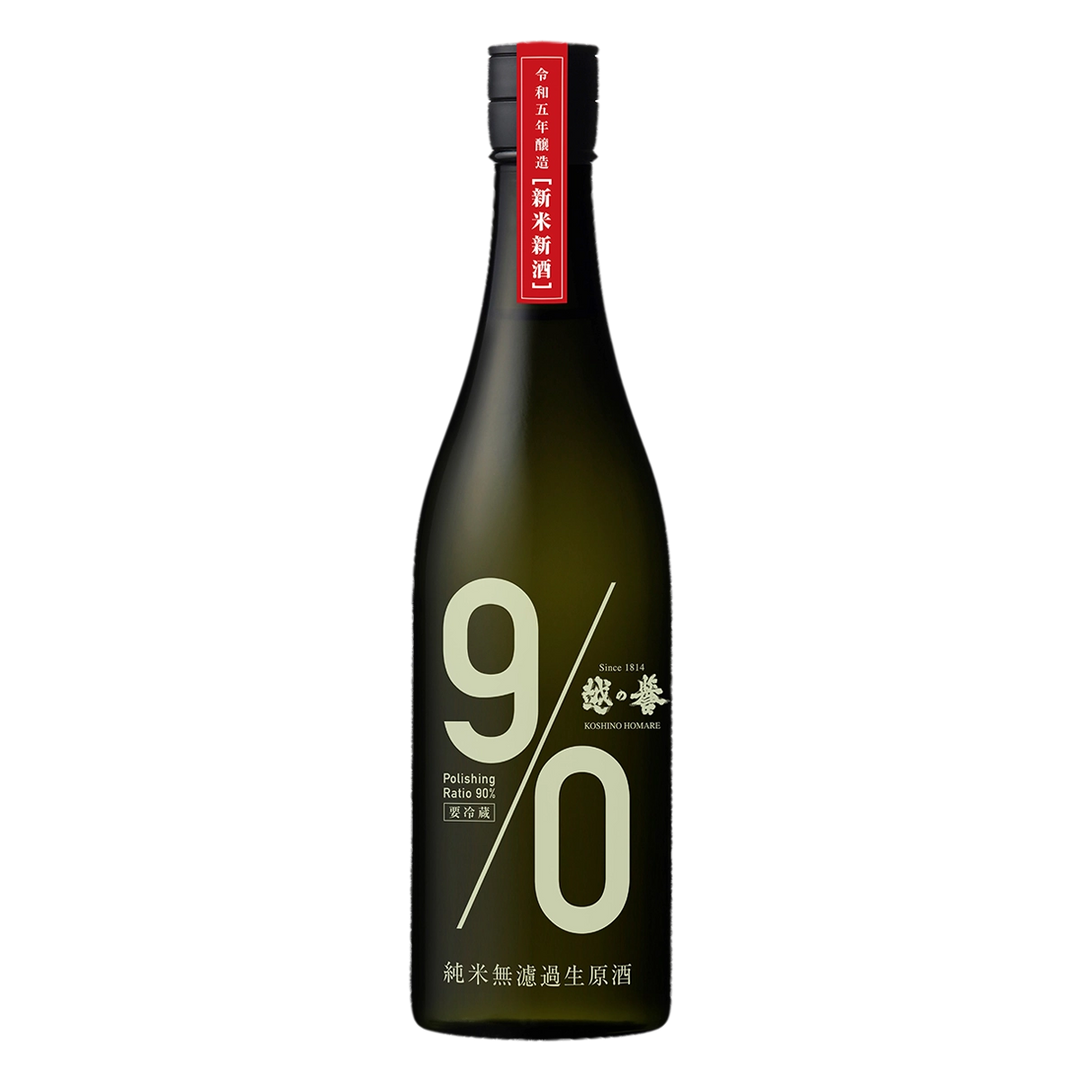
Koshi no Homare "90 Yellow" Muroka Nama Genshu
- Low stock - 1 item left
“The fastest shinmai shinshu in the country!” The whole point of Yellow 90, the first of the Koshinohomare 90 series, is its freshness! For Yellow to be bottled and ready by Sake Day 10/1, Hazuki Minori is the natural choice as it’s ready for harvest in early-mid August. Originally bred for consumer demand, there’s new appeal in a variety harvested before the now-normal September heat spikes. Per the name, only 10% of the rice is removed for a 90% polishing ratio. They ferment with a strong, cold-tolerant yeast (701) at very cold temps to encourage fruity ester production and strong acidity as well.
Shinshu/Shiboritate translates to “new sake,” and should taste like it flowed right from the tank: lively, undiluted, a bit yeasty, carbonated and immature, like Beaujolais nouveau or draft beer. In Japan, Winter is Shinshu season: production traditionally starts October 1st and the first batches are ready ~November-December.
The story of modern shinshu dates to 1792, when the Tokugawa Shogunate issued an edict banning sake brewing before September 23rd of each year. The intention was to monitor production in order to assess taxes, control rice usage, and limit the likelihood of spoilage. Fascinatingly, the German Purity Laws enforced for beer also outlawed brewing before September 29 for similar quality and enforcement reasons.
Brewery: Hara Shuzo、原酒造
Brand: Koshi no Homare, 越の誉
Location: Kashiwazaki City, Niigata Prefecture
Rice: Hazuki Minori (Niigata)
Polish: 90%
Yeast: Kyokai 701
SMV: 0
Acidity: 2.3
Brewery website: http://www.harashuzou.com
Koshinohomare translates to “Pride of Niigata,” and has been in operation for 210 years as of this writing. Their location on the Niigata coastline, roughly at the midpoint between Niigata City and Joetsu, is a seismically tumultuous area however, and has had the unintended effect of forcing Koshinohomare to rebuild from scratch...more than once. In 1911, a fire swept thrugh Kashiwazaki; fanned by the powerful
sea breeze, the entire brewery and all of its contents were lost. Believing that sake brings happiness to people, the family rebuilt. Nearly a century later, the 2007 Chuetsu-Oki earthquake shook Niigata with tremors of magnitide 7. And again, the flattened brewery was rebuilt. In a way though, this constant rebuilding has interrupted the status quo in Kashiwazaki City, leading to a stylistic divergence from the rest of Niigata which is evident in the Yellow series as well as their stylish young neighbors, Abe Shuzo. Working with the table rice Hazuki Minori is part of this ethos. Hazuki (葉月), the 8th month
of the old Japanese lunar calendar, marks late summer when leaves are peak lush. Making sake
from table rice such as this limits the energy and cost demands of rice polishing, and simplifies the
supply chain, a benefit for farmers and a safeguard against catastrophic loss of demand, as in Covid.
Tasting like a crisp apple cider fresh off the press, Koshinohomare is brightly acidic-- 2.3!-- while remaining fairly dry. If it seems a touch sweet, that’s in large part due to the body and
flavor of the Hazukiminori rice. I caught this sake doing an Oregon Chardonnay impression with chicken and barley soup, becoming soft and rounded w/ orchard fruit; with Chinese oyster sauce broccolini it was leaner, crisp and refreshing. But I enjoyed it most heated to 140 degrees, stirring constantly, in a pyrex coffee carafe (or ceramic). Hot apple-grapefruit cider...mmm

